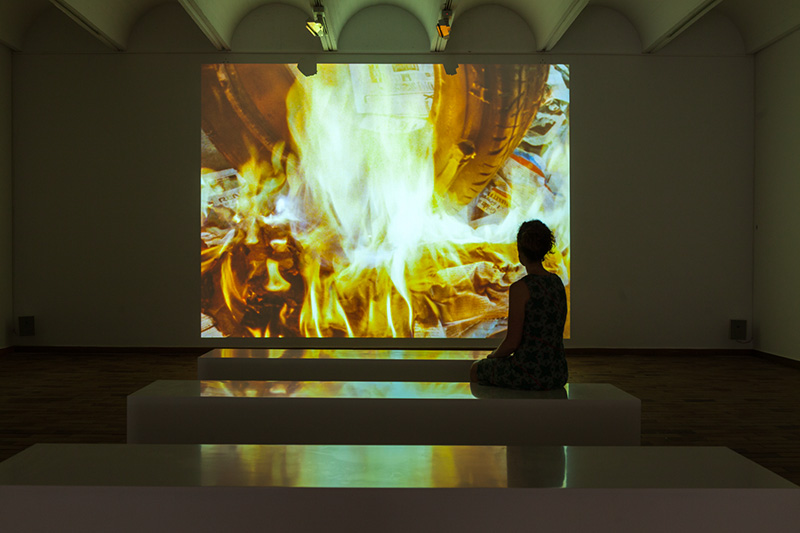ART CITIES:Barcelona-The Way Things Do
 Thirty years have gone by since the film “Der Lauf der Dinge” (better known as The Way Things Go), by Peter Fischli and David Weiss, had its first public screening at Documenta 8 in Kassel. In the course of these three decades, the art world has become global and increasingly aware of its history and its modus operandi. This critical perspective led to a spiral of revisitations and commentaries regarding key references of the visual culture that developed after the WW II.
Thirty years have gone by since the film “Der Lauf der Dinge” (better known as The Way Things Go), by Peter Fischli and David Weiss, had its first public screening at Documenta 8 in Kassel. In the course of these three decades, the art world has become global and increasingly aware of its history and its modus operandi. This critical perspective led to a spiral of revisitations and commentaries regarding key references of the visual culture that developed after the WW II.
By Efi Michalarou
Photo: Fundació Joan Miró Archive
The exhibition “The Way Things Do” revisits the film by Fischli and Weiss on the occasion of its thirtieth anniversary and places it in the hands artists born around the time it was produced, proposing an exercise around the notions of reception and perspective. The exhibition includes a screening of the original film and three new productions by four artists who provide their reinterpretations focusing on the role of the object: Cécile B. Evans, Daniel Jacoby & Yu Araki (who work in collaboration), and Serafín Álvarez. The work of Cécile B. Evans examines the influence of new technologies in the ways we feel, handle and relate to our emotions. “Leaks” is grown out of the project “Sprung a Leak”, first shown at Tate Liverpool in 2016 in which she uses multiple references. It is a deliberately complex and unconventional theatre piece performed in collaboration with three robots, a water fountain, a chorus of three users (human performers) and a system of twenty-seven screens, constantly “Leaking” emotionally charged information. The actors follow commands sent by a server with a precise system of call and response, or cause and effect, which could collapse at any moment, in a way that is not entirely different from the system of objects and actions in the exhibition. At the beginning of Yu Araki and Daniel Jacoby’s film “Mountain Plain Mountain”, an elderly man with an expressive face describes how it takes a very strong force to overcome two mountains pulling a heavy burden this ambiguity between abstraction and figuration continues throughout most of the film. We sense that the images are from some kind of ceremony or celebration, but we don’t know what kind.It isn’t just any kind of horse race: it’s Ban’ei, a particular variety that is only held, in Obihiro, in northern Japan. In Ban’ei, ten huge draft horses pull heavy iron sleighs, advancing slowly in a straight line. It’s a competition of strength and strategy rather than speed, in which the winner is the participant which best manages its energies. Serafín Álvarez’s installation focuses on material objects related to science fiction and fantasy narratives in contemporary media such as film and video games. Álvarez presents a variety of pieces, some of which were produced with support from Hangar. One of these, placed in the middle of the room, is “One Step Closer to the Finest Starry Sky There Is”, a work that explores the ways fans relate to their favourite fictional worlds from an explicitly materialistic perspective. The result is a large-scale sculpture inspired by a video game, with a large number of tangible objects of varying sizes assembled into a composite form.
Info: Curators: Serafín Álvarez and Martina Millà, Fundació Joan Miró, Parc de Montjuïc, Barcelona, Duration: 30/6-1/10/17, Days & Hours: Tue-Wed & Fri-Sat 10:00-20:00, Thu 10:00-21:00, Sun 10:00-15:00, www.fmirobcn.org





